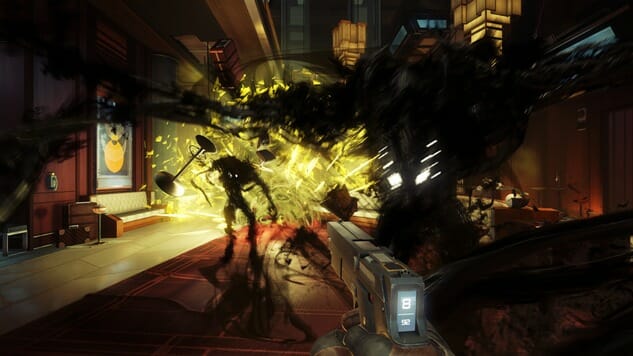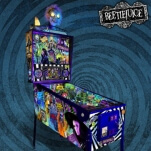5 Movie Aliens That Probably Inspired Prey's Monsters
Prey and the Pantheon of Sci-Fi Monsters

Prey’s Typhon monsters are seriously creepy. Whether it’s a run-in with a duplicitous mimic, a stalking phantom or those eerie, confounding telepaths, you’re likely to come out unnerved by the encounter. Their gooey dripping profiles and low roaring static background noises make them distinctly uncomfortable to be around. (Which is a real pain if you like using the Mind Jack or Phantom Genesis Neuromod abilities). Whether it’s in games, films or literature, for a monster to succeed at frightening an audience, it must feel otherworldly, uncanny and unknowable. Prey’s employment of this aesthetic feels inspired by some of the great monster films of the past few decades, though it ultimately creates something new and unique from the wealth of available source material. Below are a few of the films that share Prey’s sense of the grim, alien and mysterious in the design and execution of their monsters.
Alien
So much of modern sci-fi creature design draws inspiration from H.R. Giger’s ghastly creations. Preyis no exception. The tricky mimics that populate Talos I’s labs and office spaces reflect the springlike potentiality of face huggers. Walking up and examining a suspicious coffee mug’s shimmering edges might reward you with a face full of twisted black limbs, just as John Hurt’s Kane got a shocking surprise in the egg chamber back on LV-426. To be fair to Prey, one could hardly be blamed for falling for the clever antics of mimics, whereas a hundred space trucker pensions couldn’t convince me to invade the personal space of an unfolding alien egg sac.
Attack the Block
Attack the Block’s creatures are “blacker than black” according to Franz Drameh’s Dennis. They share with Giger’s Alien a lack of eyes and a threatening maw, though they are much more purposefully obscured, with a spiky profile encircling a pitch black body. This design allows them to maintain a sense of mystery even as they openly bound around the screen. They seem forever hidden in shadows even under the bright fluorescent lights of the tower block’s halls. Disrupting recognition also falls within Prey’s wheelhouse. We require light to judge the world around us and to identify what is or isn’t a threat. A creature that rejects light, and thus identification, is inherently menacing. Prey’s Typhon are built around deception—they multiply, mimic objects and teleport. Even their profiles are in constant flux: expanding in anger and shrinking into small heaps of snakelike coils in death.











































